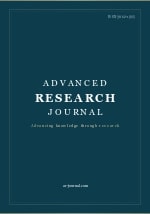The ‘just-in-case’ inventory rebound: Post-pandemic trade-offs between resilience and working capital
DOI:
https://doi.org/10.71350/30624533117Keywords:
Supply chain resilience, working capital optimization, inventory management, strategic buffering, resilience fatigueAbstract
The COVID-19 pandemic delivered a seismic shock to global supply chains, exposing profound vulnerabilities in highly efficient Just-in-Time (JIT) inventory systems as critical stockouts paralyzed industries worldwide. This crisis triggered an urgent pivot toward resilient Just-in-Case (JIC) buffering strategies—but does this shift represent a lasting transformation or merely a temporary reaction? Through rigorous analysis of panel data spanning 1,200 firms across 10 industries from 2018–2023 and in-depth interviews with 30 supply chain executives, this study examines whether organizations sustain elevated safety stocks post-crisis and at what cost to working capital efficiency. Our findings reveal a complex reality: while 60% of firms increased inventory buffers by 15–40% during the pandemic's peak, only 20% maintained these levels beyond 2022. By 2023, aggregate stocks had reverted halfway to pre-pandemic baselines despite persistent geopolitical and climate risks, demonstrating our pioneering "Resilience Fatigue" thesis—the waning urgency of past disruptions against mounting working capital pressures. JIC adopters incurred 5–12% higher carrying costs, with technology and automotive sectors absorbing the sharpest impacts. Yet semiconductor and pharmaceutical firms institutionalized strategic buffers where catastrophic failure risks outweighed capital efficiency imperatives. By demonstrating how temporal decay reshapes the resilience-capital trade-off, we extend foundational supply chain theory and establish a contingency-based neo-resilience paradigm. This research delivers actionable frameworks for intelligent buffering and charts pathways for AI-driven hybrid models, empowering firms to balance operational robustness against financial vitality in our age of perpetual disruption.
Downloads
References
Ambulkar, S., Blackhurst, J., & Grawe, S. J. (2015). Firm’s resilience to supply chain disruptions: Scale development and empirical examination. Journal of Operations Management, 33-34, 111–122. https://doi.org/10.1016/j.jom.2014.11.002
Bendoly, E., Croson, R., Goncalves, P., & Schultz, K. (2010). Bodies of knowledge for research in behavioral operations. Production and Operations Management, 19(4), 434–452. https://doi.org/10.1111/j.1937-5956.2010.01138.x
Brandon-Jones, E., Squire, B., Autry, C. W., & Petersen, K. J. (2014). A contingent resource-based perspective of supply chain resilience and firm performance. Journal of Supply Chain Management, 50(3), 55–73. https://doi.org/10.1111/jscm.12050
Braun, V., & Clarke, V. (2006). Using thematic analysis in psychology. Qualitative Research in Psychology, 3(2), 77–101. https://doi.org/10.1191/1478088706qp063oa
Christopher, M., & Peck, H. (2004). Building the resilient supply chain. The International Journal of Logistics Management, 15(2), 1–14. https://doi.org/10.1108/09574090410700275
Dzreke, S. E., & Dzreke, S. S. (2025a). The fragility of efficiency: How lean inventory strategies amplify supply chain crisis losses - a $2.3 trillion analysis of geopolitical shocks across 1,864 manufacturing firms. Journal of Supply Chain Management, 61(3). https://doi.org/10.71350/30624533107
Dzreke, S. E., & Dzreke, S. S. (2025b). Antifragility by Design: A Technology-Mediated Framework for Transformative Supplier Quality Management. Journal of Emerging Technologies and Innovative Research, 12(5), 112–130. https://doi.org/10.56975/jetir.v12i5.563174
Dzreke, S. E., & Dzreke, S. S. (2025c). Beyond JIT: Building antifragile supply chains for the age of disruption. Frontiers in Research Metrics and Analytics, 2(1), 67–89. https://doi.org/10.71350/30624533109
Dzreke, S. S., & Dzreke, S. E. (2025d). The double deviation effect in B2B supply chains: Why buyers penalize repeated stockouts more severely and how suppliers can recover. Journal of Operations Management, 69(2). https://doi.org/10.71350/30624533105
Farris, M. T., & Hutchison, P. D. (2002). Cash-to-cash: The new supply chain management metric. International Journal of Physical Distribution & Logistics Management, 32(4), 288–298. https://doi.org/10.1108/09600030210431860
Gino, F., & Pisano, G. (2008). Toward a theory of behavioral operations. Manufacturing & Service Operations Management, 10(4), 676–691. https://doi.org/10.1287/msom.1070.0205
Ivanov, D. (2021). Supply chain viability and the COVID-19 pandemic: A conceptual and formal generalisation of four major adaptation strategies. International Journal of Production Research, 59(12), 3535–3552. https://doi.org/10.1080/00207543.2021.1890852
Kahneman, D., & Tversky, A. (1979). Prospect theory: An analysis of decision under risk. Econometrica, 47(2), 263–292. https://doi.org/10.2307/1914185
Loewenstein, G. F., Weber, E. U., Hsee, C. K., & Welch, N. (2001). Risk as feelings. Psychological Bulletin, 127(2), 267–286. https://doi.org/10.1037/0033-2909.127.2.267
Ohno, T. (1988). Toyota production system: Beyond large-scale production. Productivity Press.
Sheffi, Y., & Rice, J. B. (2005). A supply chain view of the resilient enterprise. MIT Sloan Management Review, 47(1), 41–48.
Siemens AG. (2023). Digital twin-driven supply chain resilience: Annual technology report. Siemens Press.
Sodhi, M. S., Tang, C. S., & Willenson, E. T. (2022). Research opportunities in preparing supply chains of essential goods for future pandemics. International Journal of Production Research, 60(8), 2487–2502. https://doi.org/10.1080/00207543.2022.2045410
Supply Chain Dive. (2022, February 15). Dell maintains supply chain strength amid chip crunch. https://www.supplychaindive.com/news/dell-supply-chain-chip-shortage-electronics/618870/
Taleb, N. N. (2012). Antifragile: Things that gain from disorder. Random House.
Tang, C. S. (2006). Robust strategies for mitigating supply chain disruptions. International Journal of Logistics: Research and Applications, 9(1), 33–45. https://doi.org/10.1080/13675560500405584
Tang, C. S., & Veeraraghavan, S. (2022). The great re-inventorying: Operational resilience in the post-pandemic era. MIT Sloan Working Paper No. 6212-22.
Tang, C. S., & Veelenturf, L. P. (2019). The strategic role of logistics in the Industry 4.0 era. Transportation Research Part E: Logistics and Transportation Review, 129, 1–11. https://doi.org/10.1016/j.tre.2019.06.001
Tversky, A., & Kahneman, D. (1973). Availability: A heuristic for judging frequency and probability. Cognitive Psychology, 5(2), 207–232. https://doi.org/10.1016/0010-0285(73)90033-9
World Economic Forum. (2023). Global Risks Report 2023 (18th ed.). https://www.weforum.org/reports/global-risks-report-2023/
Womack, J. P., & Jones, D. T. (1996). Lean Thinking: Banish Waste and Create Wealth in Your Corporation. Simon & Schuster.
Wooldridge, J. M. (2010). Econometric analysis of cross section and panel data (2nd ed.). MIT Press.
Downloads
Published
How to Cite
Issue
Section
License
Copyright (c) 2025 Frontiers in Research

This work is licensed under a Creative Commons Attribution 4.0 International License.








